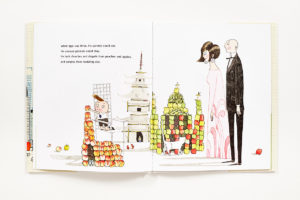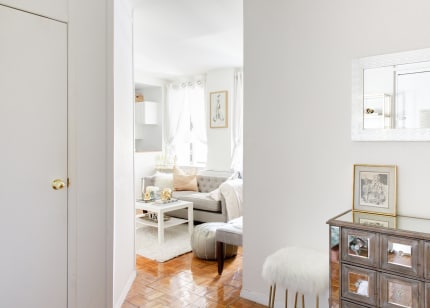Brian Lee
FIQWS
Rhetorical Analysis
In writing a paper, you want to be as persuasive as possible and writing an rhetorical analysis may be the most effective way of getting your point across. In an rhetorical analysis writing, you are focused on the structure or particular strategies that the author appeals to in order to persuade his message across to his audience. Typically, there are three main factors that define what a rhetorical analysis is. First is the writer or speaker and this is usually the author of the text. You must identify the author and establish any characteristics that may affect his or her perspective on the passage. For example, how does the author present himself? How knowledgeable is the author on the topic? These are key questions that must be taken into consideration when reading the text. Second major factor is the audience. Based on the text, who is the general audience that the author is writing to? Consider characteristics such as preferences, race, religion, etc. Finally, the message is the last key component in an rhetorical analysis writing. Ultimately what is the author’s message or purpose in the text? Why does he or she write the text? With these three key components, writing a rhetorical analysis may be one of the most persuasive writing as it considers not just the text itself, but also external factors such as the audience and the writer.
Two texts in which I will demonstrate rhetorical analysis is in Iggy Peck Architect and an home tour that is on ApartmentTherapy.com. Iggy Peck Architect is an children’s book that follows the story of a boy and his passion for building architecture. Throughout his childhood, he had the freedom to express this passion through creating various buildings out of everyday ordinary materials. However once restricted by his second grade teacher whom doesn’t allow Iggy to build anymore, he loses his purpose and motives. It is through his passion for architecture that allows him to stand out and be a leader amongst his class when in need. The second article is from Apartment Therapy which is a platform for people who want to show off or give insight to people on housing and homes. One specific article “A One Bedroom becomes Two in a “Traditional Glam” Manhattan Rental” stands out to me since it accentuates the spacious apartment despite being an small apartment with only one bedroom. The similarity between these two texts is that both have rhetorical strategies to express architecture in a different way and that is what I hope to explore.
The book Iggy Peck Architect has some distinct features that help it convey its message to children. It has a notable art style to it that helps the author express children’s need of nurturing their large amounts of creativity and passion. Images in a children’s book is essential as it helps kids develops more creativity and Iggy Peck Architect is no different. However it brings about a distinct art style that emphasizes Iggy Pecks passion for architecture and through this we can tell that children need their creativity to thrive in order to be successful. The images in the book tend to over exaggerate the creations of Iggy Peck. For example, one night when Iggy was building the St. Louis Arch out of pancakes and coconut pie, the building is twice as large as his father sitting on a chair and Iggy had to get on a ladder to continue. The building is obviously over exaggerated and through this we see the perspective of Iggy’s imagination and passion for architecture. Furthermore, when his second grade teacher told him that he can no longer build anymore, we see a very devastated boy who has lost all interest in school. This emphasizes that when restricting a child’s ability to do what he or she loves, they lose a sense of purpose, which is why child’s creativity and passion must be taken care of. When given the opportunity to let their talents show, children can do great things and a good example of this is when the class is stuck on an island and Iggy Peck leads his fellow classmates to build a bridge out of ordinary supplies such as boots, strings, tree roots, fruit roll ups, etc. Thus, the art style used and the over exaggeration help to highlight the passion and creativity in children that must be cared for in order for them to do great things in the future.

( This image shows a page out if the Children’s book Iggy Peck Architect)
In the article “A One Bedroom becomes Two in a “Traditional Glam” Manhattan Rental” from Apartment Therapy, there are distinct features about the apartment that allows Chelsey Brown, the owner of the apartment to emphasize the spaciousness of the small one bedroom apartment that she shares with another roommate. With only one bedroom that must be shared amongst two roommates, Chelsey Brown’s solution was to add faux walls to essentially add more additional rooms to the apartment. One part where she adds faux walls is to create a hallway from the kitchen/living room to the bedroom and in doing so, it adds the emphasis of a longer apartment. To further emphasis the “glam” of the apartment, Chelsey likes the neutral colors of the apartment but incorporates bursts of silver and gold decorations around the house and in doing so, the pop of neutral colors create this single apartment all come together. Thus, the imagery throughout the article allows us to really see Chelsey’s apartment that was made spacious and glamorous through the uses of faux walls and hints of silver and gold decorations.
(Chelsey transformed this one-bedroom apartment into a two bedroom, thanks to the faux walls from Wall 2 Wall she and her roommate installed. The roommate’s bedroom door is to the left.)
As presented above, there are two rhetorical analysis presented in which both used imagery as a strategy used to convey different messages about architecture. While Iggy Peck Architect used exaggerated images to emphasis a child’s passion and creativity that must be taken care and nurtured for, Chelsey Brown presents imagery in a way that highlights the faux walls and neutral colors that makes her apartment as glamorous and spacious as it is. Rhetorical analysis is one way of writing a persuasive essay as it focuses on the cores aspects of any readings and in doing so it is effective in emphasizing strategies the author uses and its effect on the audience and the message that it persuades.



